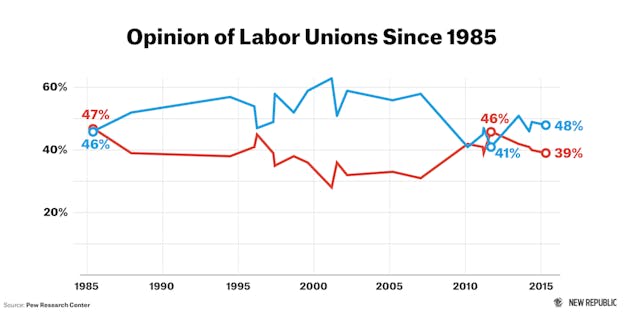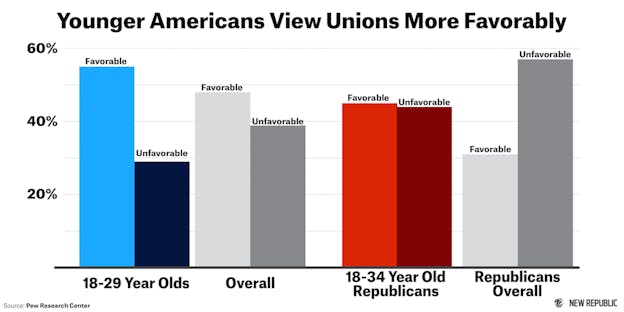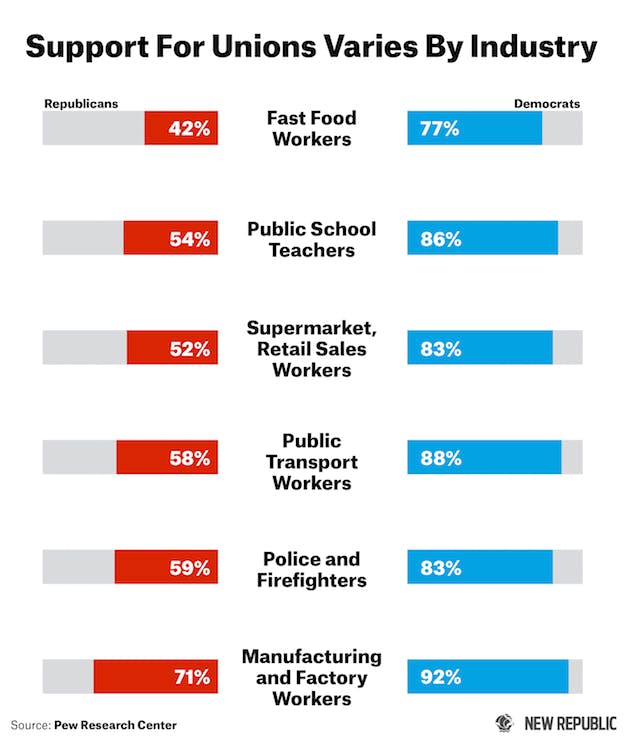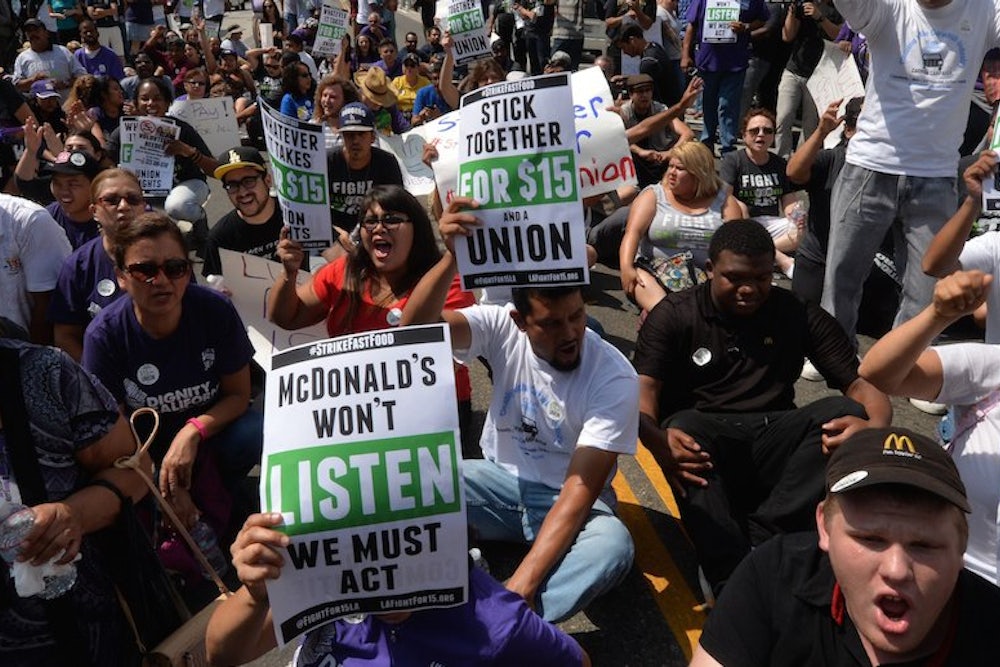Americans commemorate Labor Day in September. Internationally, the world’s workers are celebrated today—May Day, or, more formally, International Workers’ Day. In Chicago on May 4, 1886, a peaceful protest organized by American labor activists striking for an eight-hour workday and reprieve from police brutality was interrupted when an unknown person tossed a bomb at police. The police then fired on the crowd, killing several protesters and injuring many more in what became known as the Haymarket Massacre. In the years that followed, global workers rallied around their American compatriots, whose memory is now entwined with May Day.
More than a century later, American labor, despite its detractors, is still hustling for workers’ rights. The Pew Research Center on Monday released a report detailing the American public’s outlook on labor unions. There were a few surprises.

First, young people of both parties are more amenable to labor unions than their older peers. Fifty-five percent of people between 18 and 29 view unions favorably, while only 29 percent view them unfavorably. Younger self-identified Republicans are evenly split on labor: 45 percent of them 18 to 34 view unions positively, and 44 percent negatively. Move up to the 35-to-49 Republican age bracket, and a mere 31 percent view unions favorably against 51 percent who view them unfavorably.

Despite recent strides in right-to-work legislation, a resurgence in union strength might just come as millennials ascend to political power. It makes sense: Young people have grown up during a massive recession and watched wages associated with middle-class jobs of yesteryear drop precipitously. Unions might be the most promising way to assure that working class people get a shot at turning their jobs into livable occupations. Union-friendly young people may yet recover the dignity and value of working-class jobs as they move into the workforce en masse. The world runs on workers, and deserves to be reminded of that more than once or twice a year.

